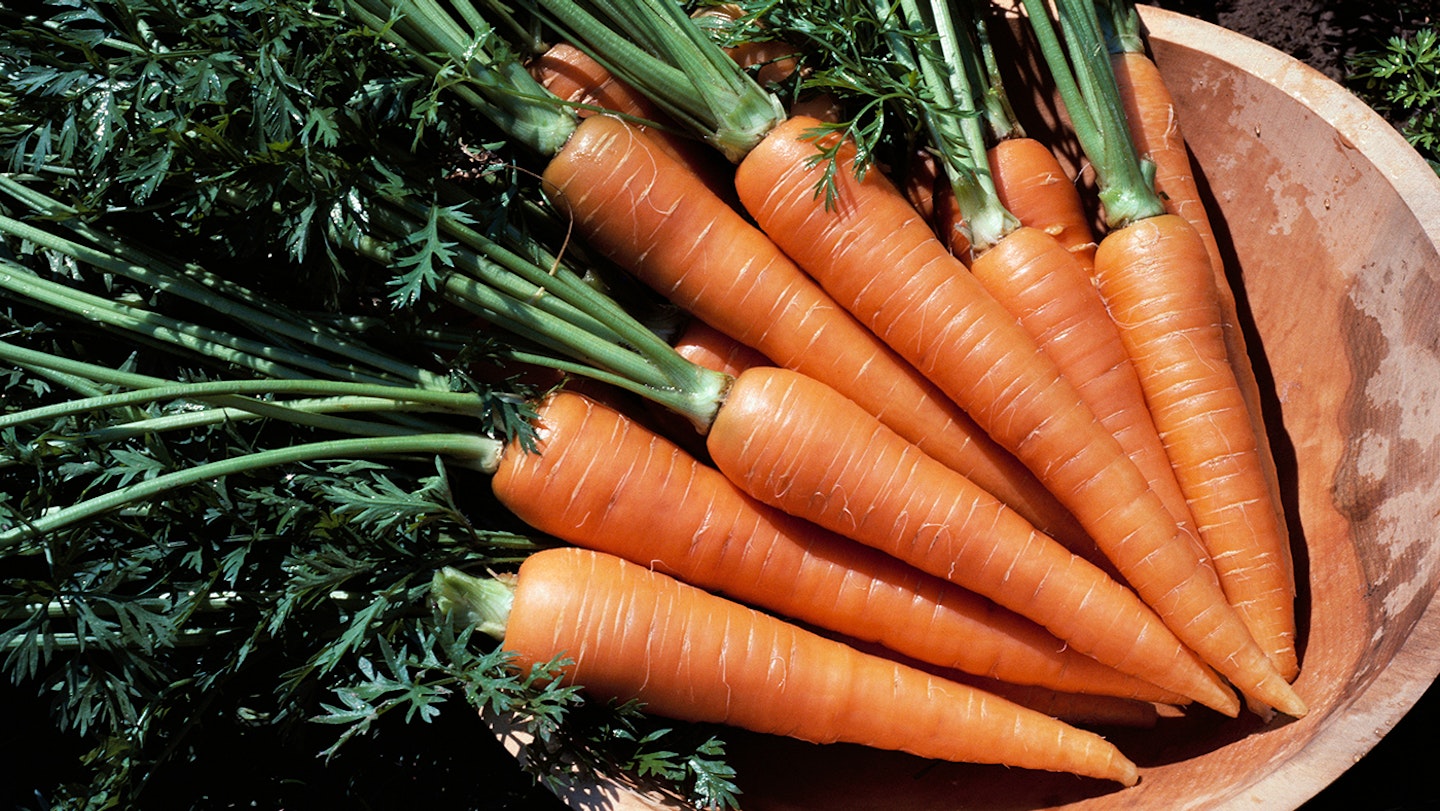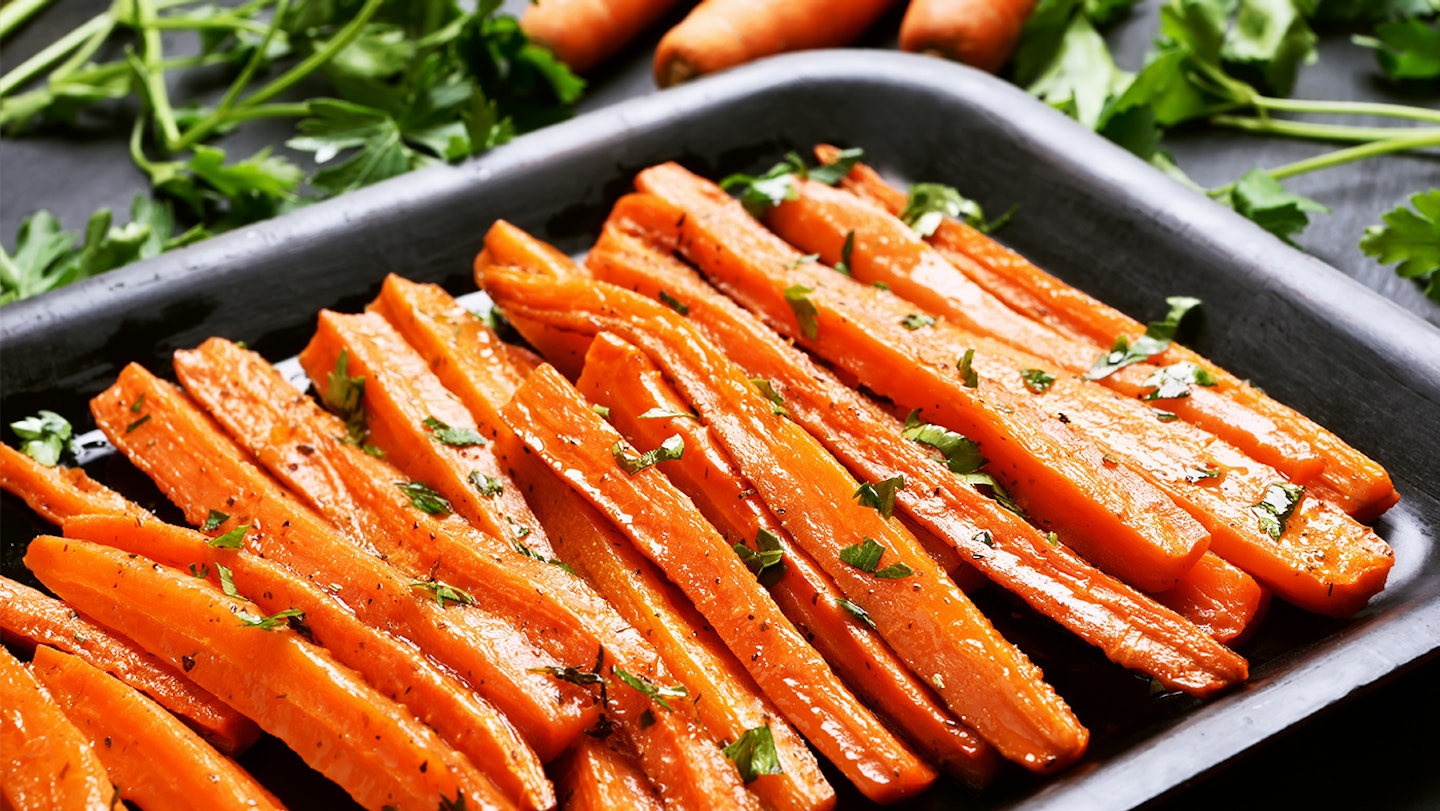The humble carrot may not look like much, but whether you're dunking batons into pots of creamy hummus or roasting them for a side dish, carrots are a great way to work towards your five a day as they offer a whole host of health benefits.
A root vegetable, carrots are most commonly orange in colour, although they do come in other colours such as black, yellow and even purple. You can even get four different types!
We spoke to nutrition coach and plant-based chef Lisa Marley to find out everything you need to know about carrots.
What are the health benefits of carrots?
Orange carrots get their bright colour from beta carotene, an antioxidant that the body converts to vitamin A, making them a brilliant food choice high in vitamin A. This promotes good vision and is important for growth and development.
They contain a variety of vitamins and minerals including vitamin C, vitamin D, vitamin K, calcium, iron, vitamin B6, and magnesium. Carrots are also a great source of fibre. Soluble fibre can lower blood sugar levels by slowing down your digestion of sugar and starch.
Carrots can help improve gut health and digestion. They feed the friendly bacteria in your gut, which can help decrease the risk of disease.
Are there any side effects to eating carrots?
As carrots are high in fibre, they can be harder to digest. The starches in them can be difficult to digest, similar to sweet corn. However, cooking can make them softer and therefore easier to digest.
Carrots have a high amount of natural sugars, therefore people with diabetes shouldn’t consume a large amount. However, the benefits of eating carrots in moderation outweigh any potential side effects.

Can you eat carrots every day?
It’s perfectly safe to eat carrots every day but not in excess. Eating a very large amount of carrots every day can lead to carotenemia which results in a yellow pigmentation of the skin. However, you would need to consume excessively over a prolonged period of time.
Different varieties of carrots
The four main types of carrots are Imperator, Danvers, Nates, and Chantenay.
Imperator-type carrots are splendid in looks and taste. They have long roots, up to 10 inches long, with high sugar content, and are fantastic for fresh eating.
Danvers are the classic medium-length carrots with rounded shoulders and pointed ends. They can grow to about 7 inches long and can grow in shallow soils.
Nantes are easy to grow and have a crisp, sweet taste.
Chantenay carrots are shorter in length and need to be harvested as soon as they size up, or they will turn fibrous and tough.
What to look for when buying carrots
• An even colour throughout and look for signs of deterioration on the crown end.
• Thin root hairs are a sign of age, therefore won’t be at their best.
• If you’re buying them with their tops, the greens should look vibrant and be firm, not flimsy or wilted.
• If the carrots are bagged, avoid those that seem wet or dry and white, inside the bag. Carrots should stay crisp and sweet for weeks when stored in a breathable bag in the fridge.
Should I peel carrots?
This is a personal choice. Unpeeled carrots may have a slightly bitter taste when cooked. They can also be gritty and tough. Peeled carrots may take longer to prep but they, in my opinion, taste better. However, as long as you wash and scrub the root vegetables before chopping, dicing, or otherwise preparing them for a recipe, it’s fine to eat.
How to cook carrots
Boiled - They taste tender and savoury sweet: and if you boil them just the right amount of time, they will be soft but not mushy. Carrots sliced into 1-4-inch slices take 4 to 5 minutes to cook to crisp-tender. You can cook them a little longer if you prefer carrots that are even more tender.
Roasted - A classic way to cook carrots. Par boil the carrots first then leave in a colander to steam-dry for a few minutes, and then toss in a large roasting tin with the olive oil, maple syrup, vinegar and seasoning. Roast for 30-40 mins

Sautéed carrots - A fast, easy, and healthy way to cook carrots. Cooked correctly, they’re perfectly tender and the ideal mix of sweet and savoury.
Steaming - Steamed carrots are delicious. They have a fresh, naturally sweet taste and require minimal seasoning.
Puréed - Carrots make a great mash or are perfect to combine with mashed potatoes.
You can also griddle, steam and microwave carrots.
When we cook carrots by roasting, baking, griddling or microwaving we can improve, or at the very least maintain, their carotenoid content. Puréed and served with a small amount of fat or oil and you’ll increase your ability to absorb the pro-vitamin A content.
Carrot nutrition
Serving size: 1 carrot (46g)
16 calories
3.8g carbohydrates
Protein 0.4g
Sodium 27mg
Sugars 1.6g
Protein 0.4g
Calcium 14mg
Iron 0.2mg
Potassium 108.1mg
How many calories are in a raw carrot?
The calories in a carrot depend on its size. One raw, medium-sized carrot has around 25 calories.
How many calories are in a carrot?
Carrots shirk down when cooked so a medium-sized carrot may have slightly more calories than when raw.
This article contains expert advice from Lisa Marley. Lisa is a popular plant-based chef, nutrition coach and ProVeg UK Chef trainer. Lisa contributes to various publications and is a regular guest on BBC Radio.

